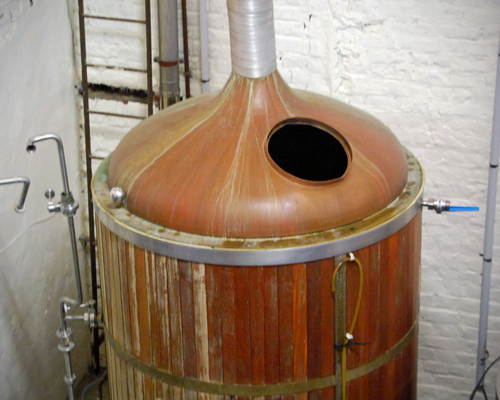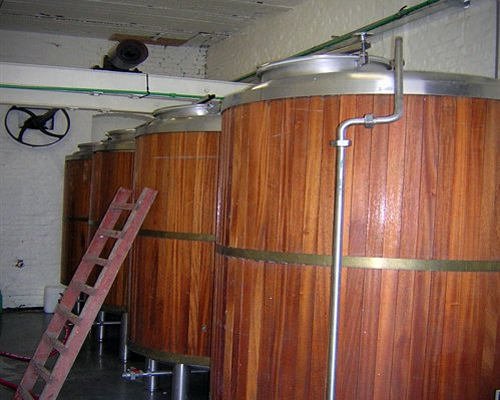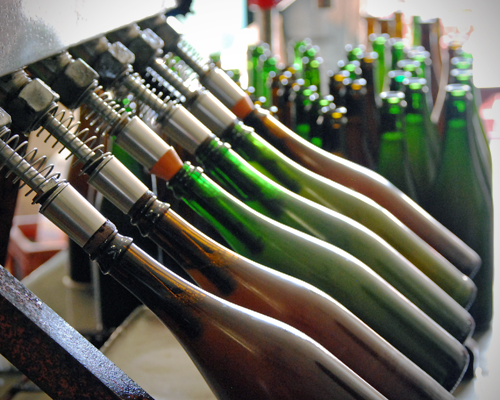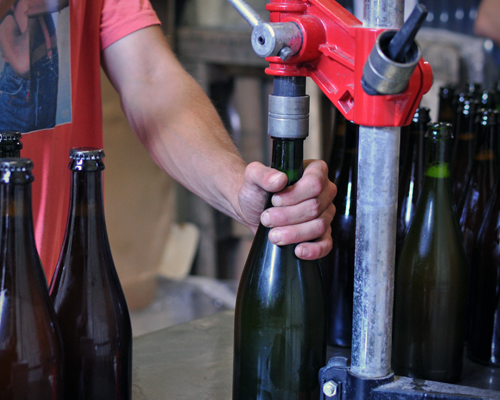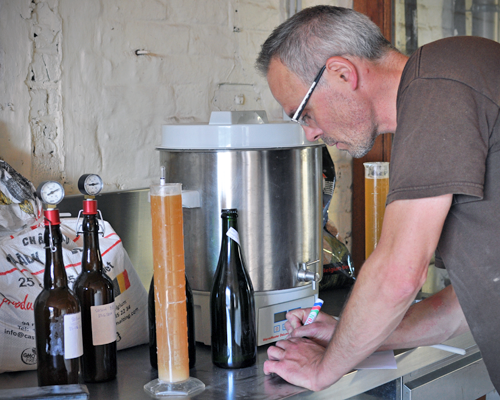
The idea for a new beer recipe often occurs by chance. It starts by the discovery of a new variety of malt or hop which spurs the brewer’s imagination. Smell a hop flower, taste a new malt, and ideas abound…
New beer projects are then created in the lab, in a little 20-litre installation. If the tests are conclusive and please the team, it’s the turn of our friends and acquaintances to taste the beer and to give their opinions. This is a good way of learning how our projects might be accepted by the market. Moreover, it regularly happens that certain beers, which were initially OK, do not get beyond the laboratory stage…
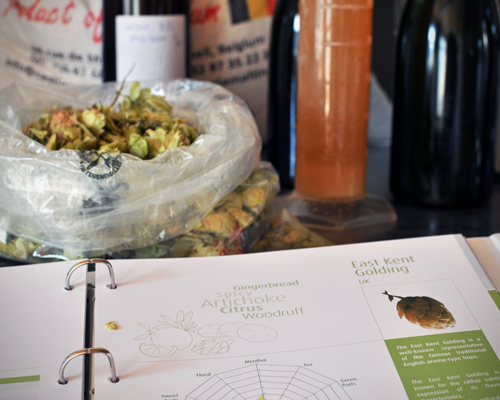
Then, on the basis of those comments and opinions, the recipe is adapted then produced on the main installation. The first brews regularly see the proportions of the various ingredients adapted in the light of the successive tastings. After a few brews, the recipe is definitively adopted and the new beer can be enjoyed by the general public.
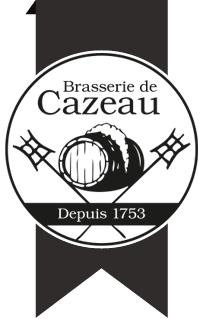
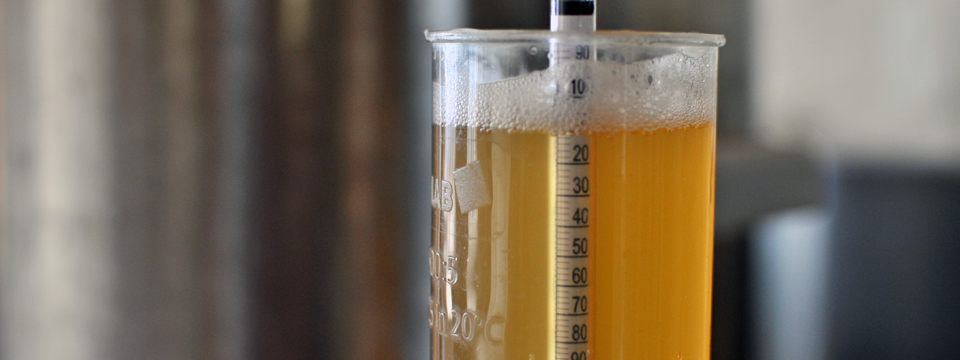
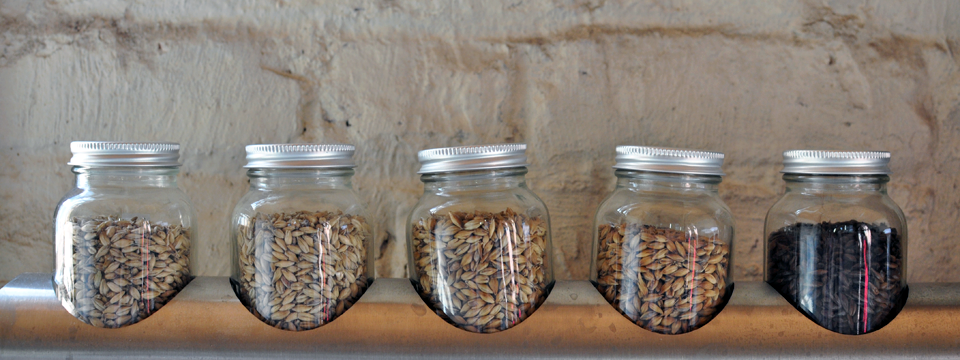
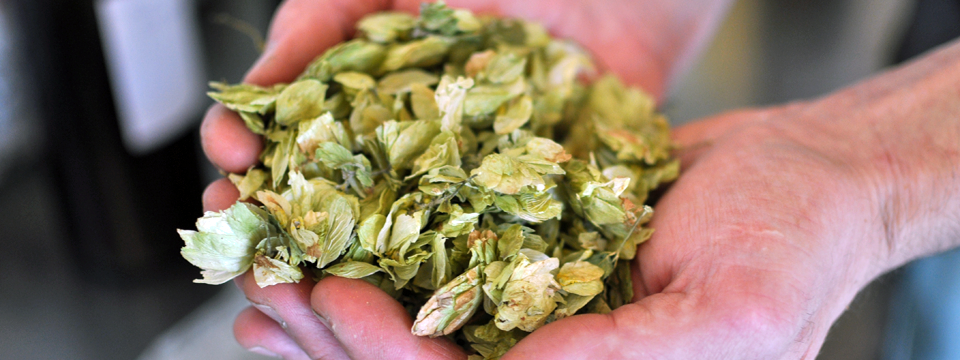
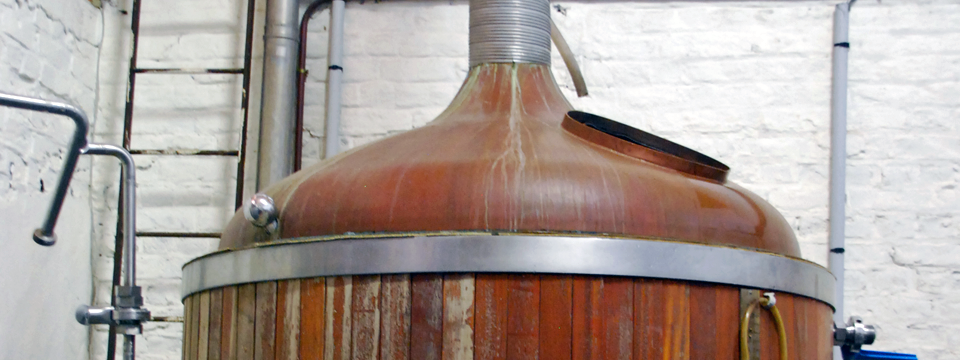
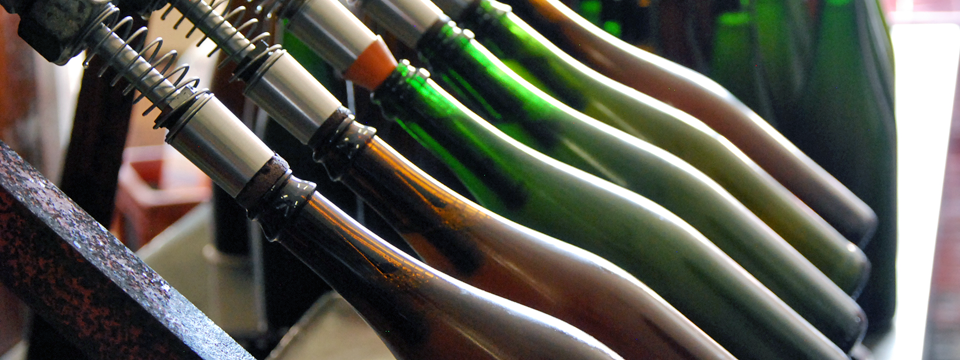
 Innovation
Innovation Malting
Malting Brewing
Brewing Boiling
Boiling Fermentation
Fermentation Bottling
Bottling

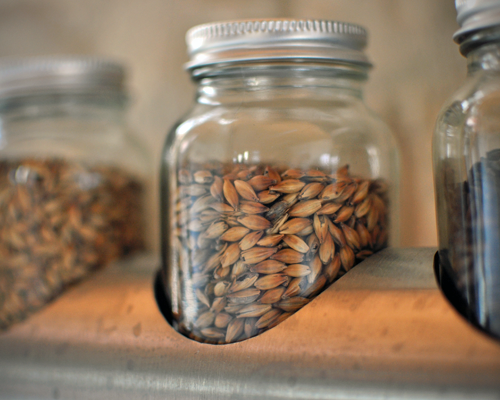 Take a grain of barley (let’s call it the hordeum disticum), matured under the setting sun on a summer evening. Convince it (with a little bit of persuasion) that it is ready to do its job, i.e. to germinate and give birth to a new generation of barley plantlets. At this stage it will need to find the strength to sprout.
Take a grain of barley (let’s call it the hordeum disticum), matured under the setting sun on a summer evening. Convince it (with a little bit of persuasion) that it is ready to do its job, i.e. to germinate and give birth to a new generation of barley plantlets. At this stage it will need to find the strength to sprout.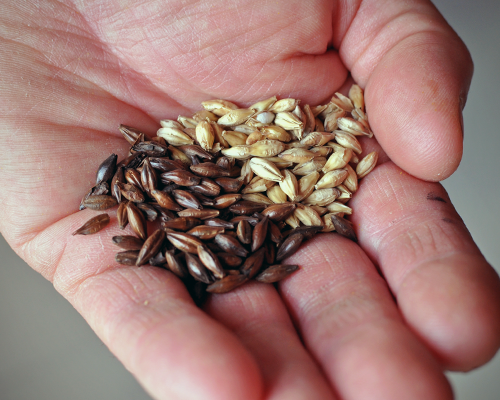

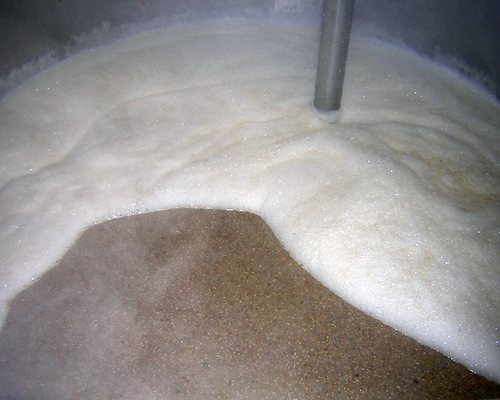
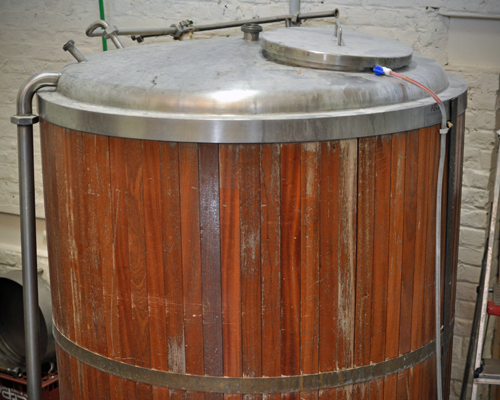

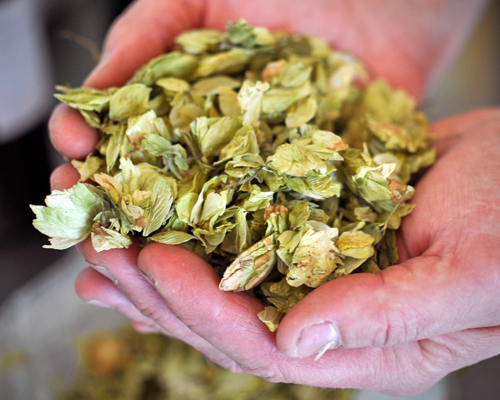 The aim of the boiling is to concentrate the wort and sterilise it. This is also the point when the brewer adds the hops that give the Tournay its distinctive delicious aroma.
The aim of the boiling is to concentrate the wort and sterilise it. This is also the point when the brewer adds the hops that give the Tournay its distinctive delicious aroma.